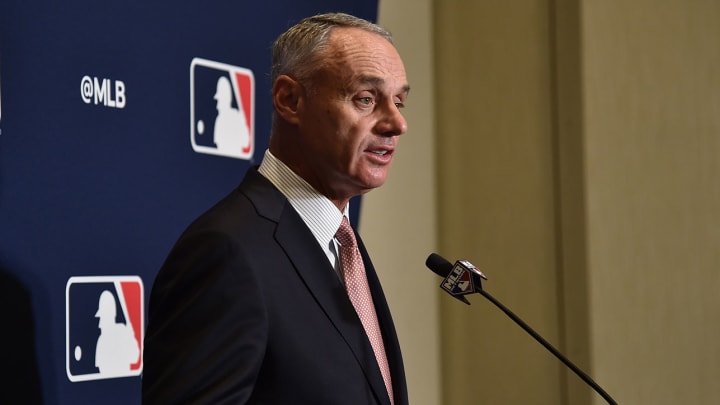MLB Proposes Plan to Test All Players and Staff for Coronavirus When Season Resumes

One of the hurdles Major League Baseball faces in a return to play is how to provide frequent and comprehensive coronavirus testing without depriving frontline workers and the more vulnerable from needed tests. MLB believes it has cleared that hurdle: by partnering with the Utah lab that runs its performance-enhancing drug program to turn that lab into a coronavirus testing facility.
In partnership with MLB, the Utah lab, The Sports Medicine Research and Testing Laboratory, not only would provide coronavirus testing for the 3,000 or so baseball players and support staff but also for thousands more in the general public. Under that plan, MLB would provide a net gain to public testing rather than drawing from existing resources.
The testing plan was presented to the players association Tuesday as part of a wider proposal of health protocols, some of which have been borrowed from sports leagues that already have returned, such as the Korean Baseball Organization. KBO tests players and staff frequently, including via mouth and nasal swabs, while also using body scan temperature sensing units.
With a testing proposal in place, the largest impediment to return to play is an agreement between MLB and the union on how players should be paid. The union believes an agreement already exists, based on an understanding in March that players will be paid a prorated portion of their salaries based on games played. MLB believes the understanding included the right to revisit that plan if games are played in empty ballparks, which would hold true for the beginning of a resumption of play, if not the entire season. MLB gets about 40% of its revenues from in-ballpark sources.
Without fans, MLB is asking players to take 50% of the 2020 revenues. Revenue sharing always has been a nonstarter for the union.
As often is typical in baseball labor relations, both sides have staked their ground and dug in their heels. Movement toward a compromise is not likely until a “soft deadline” when a shortened season becomes jeopardized. That “soft deadline” is likely around June 1.
Baseball does not want to push the postseason deep into November for fear a second wave of the virus could put the postseason at risk. The postseason and its network fees represent a huge chunk of MLB revenues. To play an 82-game season and keep a somewhat normal postseason calendar with a field expanded from 10 to 14, baseball would need to start games around the first week of July. To get players ready for that timetable, training camps would need to begin about three weeks earlier.
Both sides know they incur tremendous costs if there is no compromise toward an agreement. Players don’t get paid, owners don’t get revenue, and baseball, a sport with declining attendance seven straight years, is branded as a sport that remained shut down because it bickered over money at a time of unprecedented sacrifice and suffering amid the greatest economic downturn since the Great Depression.
MLB is in the process of turning the return-to-play plan presented to the union Tuesday into a detailed proposal that is expected to run more than 80 pages. Teams will play only within their division and against the same division of the opposite league. Playing 13 games against each of the four division rivals and six against the interleague rival creates an 82-game schedule with reduced travel.
SMRTL works with several professional leagues and the World Anti-Doping Agency to perform PED testing and research. But with sports shut down, SMRTL has turned its testing expertise toward COVID-19. Last month with the assistance of MLB and in cooperation with Stanford and USC, it launched the first nationwide testing program of COVID-19 antibodies in blood samples. The study included more than 5,600 complete test results from MLB employees. The results showed 0.7% of tests as positive for antibodies, of which 70% were from asymptomatic carriers.

Tom Verducci is a senior writer for Sports Illustrated who has covered Major League Baseball since 1981. He also serves as an analyst for FOX Sports and the MLB Network; is a New York Times best-selling author; and cohosts The Book of Joe podcast with Joe Maddon. A five-time Emmy Award winner across three categories (studio analyst, reporter, short form writing) and nominated in a fourth (game analyst), he is a three-time National Sportswriter of the Year winner, two-time National Magazine Award finalist, and a Penn State Distinguished Alumnus Award recipient. Verducci is a member of the National Sports Media Hall of Fame, Baseball Writers Association of America (including past New York chapter chairman) and a Baseball Hall of Fame voter since 1993. He also is the only writer to be a game analyst for World Series telecasts. He lives in New Jersey with his wife, with whom he has two children.